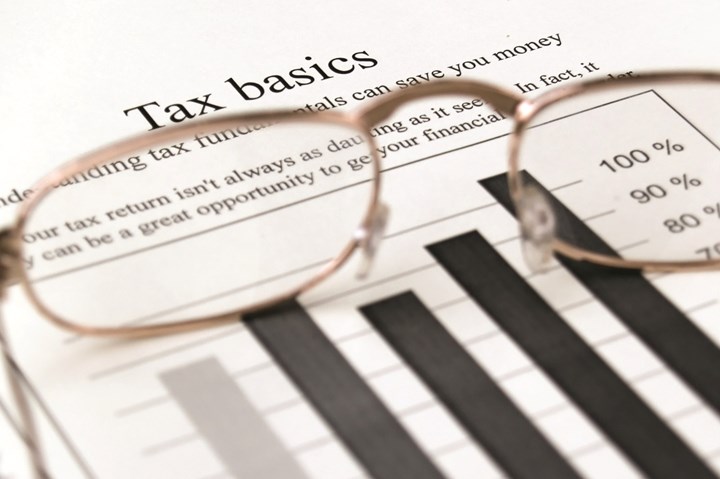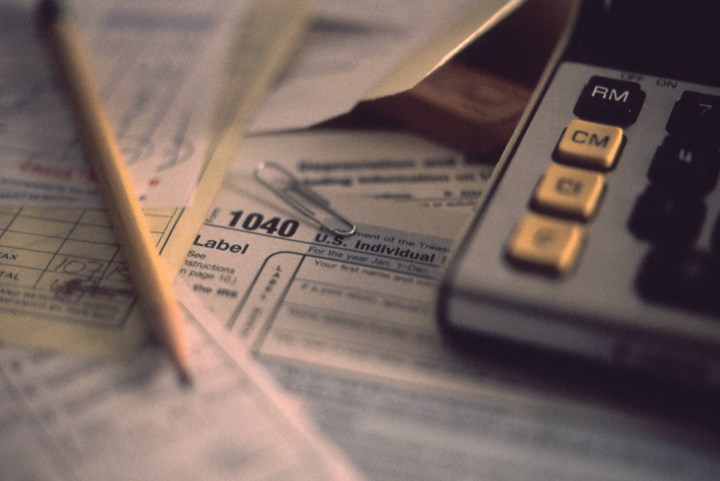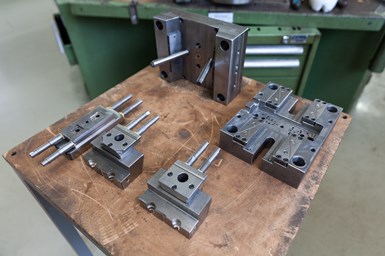
The R&D tax credit enables U.S.-based businesses, including mold builders, to recoup approximately 10% of their qualified research expenses for taking risks for innovation. Photo Credit: iStock
Continuous innovation enables mold builders to lower costs, shorten delivery time and improve overall product performance to meet ever-increasing customer expectations. Fortunately, expenditures incurred from implementing new technology, improving the manufacturing process or testing materials to drive innovation can qualify for the research and development (R&D) tax credit.
The R&D tax credit enables U.S.-based businesses to recoup approximately 10% of their qualified research expenses for taking risks for innovation. Often misunderstood, manufacturers don’t have to develop something entirely new to the world or the plastics industry to qualify for the tax credit. In other words, as long as businesses invest in ideas, concepts, processes and technology new to their organization, they can be eligible for the R&D tax credit.
Featured Content
Here’s a list of the top 10 moldmaking activities frequently performed in the course of daily business that qualifies for the R&D tax credit.
1. Sales/Quoting
Mold builders are often unaware that their time and effort performing engineering and conceptual design, CAD modeling and process planning can qualify for the R&D tax credit. If a company performs technical research activities during the sales/quoting process, it could get back a portion of its expenditures.
For example, upon customer request, mold builders may identify technical specifications, assess the alternatives to reduce cost and prepare schematics to quote the price. Individuals performing these qualified activities include technical sales representatives, sales engineers and designers.
The good news is that even if your sales activities don’t lead to a new customer contract, the pro bono work to research and develop initial designs can still qualify for the credit.
2. Designing and Building New or Improved Molds
In the initial mold design process, mold builders identify, consider and assess alternative materials and potential design iterations. These activities are intended to overcome technical uncertainties encountered at the outset of product development and qualify for the R&D tax credit. For example, engineering the cavity and the gate, sprue or runner with CAD software is qualifying.
In addition, Section 41(b)(2)(B) defines “qualified wages” as those associated with employees who perform, directly supervise or support the qualified research activities. So, the eligible job functions are not limited to just the designers.
For example, let’s say your company’s owner and product manager both participate in a cross-functional meeting to discuss the new mold’s ideal size, form, materials and function. Their time dedicated to technical discussions can qualify.
Often misunderstood, manufacturers don’t have to develop something entirely new to the world or the plastics industry to qualify for the tax credit. In other words, as long as businesses invest in ideas, concepts, processes and technology new to their organization, they can be eligible for the R&D tax credit.
3. Developing New or Improved Tooling
Tool development is an iterative process (a key point for qualifying for R&D tax credits), where alternatives for materials and potential designs are tested to arrive at tooling that fulfills the project specifications and requirements.
For example, if you optimize the production process, code the machine programming and validate the components to create precision molds, these types of activities are considered eligible. Various job titles can perform these processes, including engineers, mold/tool designers, CNC machinists and product managers.
Even if you outsource mold design and manufacturing to third-party contractors, there’s still a chance to pick up the qualifying expenses. Your company can claim 65% of any amount paid to the contractor as a qualified research expense as long as it retains substantial rights to (and maintains economic risk associated with) the R&D results.
4. Performing a Pack and Hold Study
The knowledge gained from an injection molding pack and hold test is an integral component of the molding optimization process, leading to significant improvements to your finished product. This step is considered a process of experimentation to validate the models. The costs associated with mold evaluation qualify for the R&D tax credit.
Let’s say you performed pack and hold time testing to improve mold processing conditions to reduce waste associated with off-spec products. Direct labor costs dedicated to optimizing pack time, hold time and pressure is eligible for the tax credit.
Another cost to consider is the supply cost. Section 41(b)(2)(C) defines “supply” as any tangible property other than (1) land or improvements to land and (2) property of a character subject to the allowance for depreciation. So, the depreciative expenses such as the cost of machines would not qualify for the credit; however, any raw materials used during the pack and hold study can be eligible.

As long as businesses invest in ideas, concepts, processes and technology new to their shops, they can be eligible for the R&D tax credit. Photo Credit: Getty Images
5. Experimenting with Different Materials
Mold builders may experiment with different plastic resins for specific projects. For example, when a new formulation is needed to achieve a specific requirement, this development qualifies as an R&D project. In addition, investigating raw material ratios to overcome detrimental environmental conditions, including chemical exposure or UV light tolerance, can enhance the end product’s function, performance and reliability. Since this experimentation is an iterative process that requires trial and error, it also qualifies for the tax credit.
For example, your shop could have various qualifying employees performing these types of activities, including material engineers, chemists, rheologists, machinists and technical managers. The time spent evaluating alternative materials and testing those materials can be applied to the R&D tax credit.
6. Performing Structural Analysis of Injection-Molded Components
Structural analysis is a crucial step in evaluating the performance of a new mold. Evaluating a mold’s mechanical integrity, hydraulic performance, flex tolerance and durability is considered a qualified research activity. For example, simulating and optimizing how molded parts react to external influences such as heat, vibration or fluid flow can qualify.
Another expense to consider here is the software development cost. As long as it satisfies the high-threshold-of-innovation test as defined in Regs. Sec. 1.41-4(c)(6)(vii), the cost incurred developing internal-use software to enhance analysis capabilities can qualify. For example, developing simulation software to improve your project’s analysis performance and quality metrics is a qualifying activity. However, if you intend to sell or license this software to others, the high-threshold-of-innovation test will not apply.
Whether the prototype is scrapped or sold to a customer, mold builders can recoup the supply costs, along with the employee wages incurred during the prototyping phase.
7. Building and Testing Prototype Plastic Injection Molds
Building a prototype is another step in the process of experimentation meant to overcome the technical challenges encountered during the development of new or improved molds. This effort — associated with design, capability or methodology — qualifies for the R&D tax credit.

Mold builders identify, consider and assess alternative materials and potential design iterations. Photo Credit: Getty Images
Specifically, the designers, developers or machinists’ time for prototyping can be eligible. Also, gathering customer feedback and improving the mold design or functionality can be classified as a qualifying activity.
In 2014, treasury regulations were released taking a favorable treatment of cost incurred to develop “pilot models,” enabling companies to qualify the expenses regardless of “success, failure, sale or use of the product.” This means that whether the prototype is scrapped or sold to a customer, mold builders can recoup the supply costs, along with the employee wages incurred during the prototyping phase.
8. Assuring Quality through Inspections and Non-Destructive Testing
After producing the prototype, mold builders investigate the prototype’s performance, reliability, functionality and quality. Then, thousands of measurements are performed to ensure that the tolerance metrics meet the part specifications before moving into the production phase. Since the quality assurance examines mechanical failure or identifies room for improvement throughout the molding process, as long as you are still resolving the technical uncertainty of your mold design, this is a qualified activity.
For example, individuals involved with the quality assurance analysis or non-destructive testing processes typically will qualify. Typically, deficiencies are discovered during this process, requiring additional design, engineering and process improvement activities. If a redesign is required after the inspection, the designers, programmers and quality engineers are brought back into the project and the R&D process continues. The costs to use third-party inspection experts can also qualify.
9. Improving the Production Process
Whether you reconfigure the shop floor, implement or develop ISO standards, the effort towards improving a production process qualifies. The R&D tax credit applies to not only new/improved products, resin formulations and software programming. Process improvement initiatives, new techniques and patents can also qualify for tax credits.
Again, process improvements are qualified as long as the production process is new to the company and meets the 4-Part Test requirements. In addition, companies can recoup a portion of the costs associated with these projects through an R&D tax credit study.
10. Integrating Automation or Robotics to Streamline Manufacturing Processes
Mold builders and injection molders often initiate robotic automation projects to improve production capacity during the quality assurance process. Automated systems such as five-axis laser measurement robots create an integrated approach for quality control and operational efficiency. However, suppose you contemplate a similar process in your shop (which can get costly). In that case, it’s important not to miss out on the opportunity to recover some of the investment through the R&D credit.
The IRS doesn’t allow “double-dipping,” so depreciated equipment won't qualify for the credit. However, the expenses associated with designing, engineering and characterizing robotic processes or developing new AI software capabilities can be classified as qualified research expenses.
The key to getting the most return on your investment is to consult with an R&D tax credit expert that stays abreast of the ever-changing IRS regulatory requirements and will ethically maximize your R&D credit claim. Don’t miss out on an opportunity to reduce your bottom line.
RELATED CONTENT
-
Making Quick and Easy Kaizen Work for Your Shop
Within each person is unlimited creative potential to improve shop operations.
-
Going Against the Grain: Low Cavitation Vs. High Cavitation
An injection mold expert speaks out against high-cavitation molds. There is a time and a place for them, he contends, but they should not be chosen for financial considerations alone.
-
Maximum RPM Machining: Necessities of High-Speed Moldmaking
Mold shops will thrive if they practice an ‘all-aspects’ process to HSM, which includes the machine, cutting tool, toolholder, proper balance and application support.
.jpg;maxWidth=970;quality=90)












